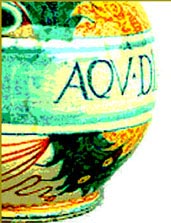| |
|
|
| |
|
|
| |
| Crèdits / Crédits / Credits |
|
|
|
|
|
Reptes EEES |
|
|
|
|
|
|
|
|
DISEÑO E IMPLEMENTACIÓN DE UN MÉTODO DE AUTOAPRENDIZAJE GUIADO EN FARMACOLOGÍA QUE UTILIZA LAS TICs, LOS CASOS CLÍNICOS Y LA AUTOEVALUACIÓN
|

|
|
|
|
Gil-Longo*, J; Villar Cordovés, R. |
|
|
|
|
RESEÑA |
|
|
Durante 5 cursos académicos se ha implementado un método de Autoaprendizaje Guiado para abordar el
módulo Farmacología del metabolismo y la nutrición perteneciente a la asignatura Farmacoloxía II. El
nuevo método aprovecha las tecnologías de la información y la comunicación (TICs), los casos clínicos y
la autoevaluación, y pretende desarrollar, además de las competencias específicas, la capacidad del
alumno para autoaprender y para tomar decisiones. La evaluación del aprendizaje se realizó en base a la
resolución de un caso clínico y a un examen objetivo tipo test. Los resultados obtenidos indican que el Autoaprendizaje Guiado tiene varios aspectos positivos: 1) es ampliamente aceptado; 2) incrementa el
porcentaje de alumnos que superan la asignatura; 3) familiariza a los alumnos con las TICs, los casos
clínicos y la autoevaluación; y 4) estimula el aprendizaje activo. Sin embargo, el nuevo método: 1) no
estimula la asistencia de los alumnos a las clases teóricas; y 2) no mejora el rendimiento de los alumnos
en el examen final. |
|
|
|
|
|
REVIEW |
|
|
During five academic years, a Guided Self-learning method was implemented to tackle the Pharmacology
of Metabolism and Nutrition module belonging to the Farmacoloxía II subject. The new method takes
advantage of information and communication technologies (ICTs), clinical cases and self-evaluation, and
its aims were to improve student’s self-learning and making-decision skills and specific competencies.
The assessment process was based on a clinical case and a multiple-choice final exam. The results
obtained show that the Guided Self-learning method has several positive aspects: 1) it is well accepted; 2)
it increases course pass rates; 3) it familiarizes students with ICTs, clinical cases and self-learning; and 4)
it promotes active learning. However, the new method: 1) does not improve the attendance of students at
lectures; and 2) does not improve the performance of students on the final exam |
|
| |
 |
| |
tornar al sumari |
|
|



